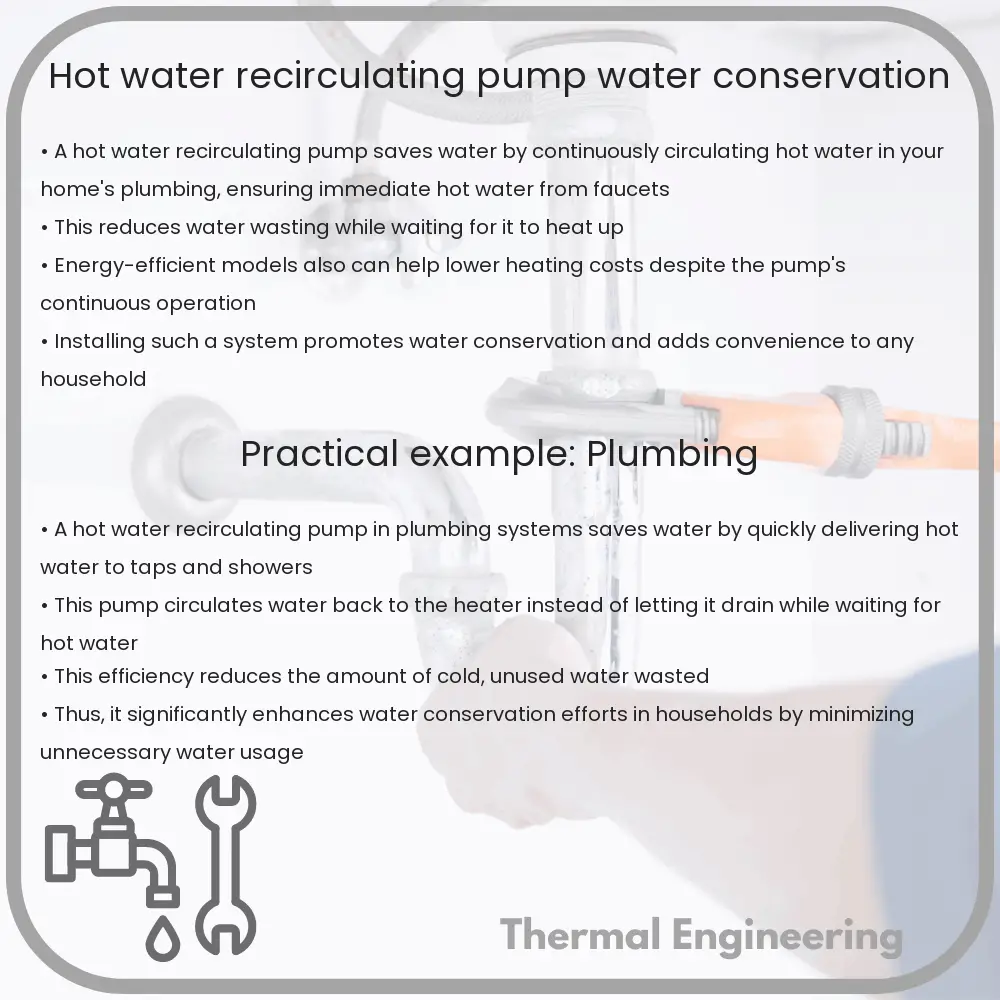Learn about hot water recirculating pumps, their function in minimizing water waste, enhancing energy efficiency, and ensuring instant hot water access.

Understanding Hot Water Recirculating Pumps and Their Role in Water Conservation
Hot water recirculating pumps are an intriguing piece of engineering designed to reduce water waste and enhance the convenience of hot water delivery in residential and commercial buildings. These systems provide immediate hot water when a faucet is turned on, which not only saves water but can also reduce energy consumption. Let’s explore how these pumps work, their benefits, and the considerations one should keep in mind when using them.
How Do Hot Water Recirculating Pumps Work?
Typically, without a recirculating system, unused water in the hot water pipeline cools down and must be purged out and wasted to get hot water. A hot water recirculating pump solves this problem by continuously circulating hot water through the pipes. This ensures that hot water is instantly available at all outlets, minimizing the waiting time for hot water to reach the tap and thus conserving the water that would have been wasted.
The operation of these pumps can be controlled by timers or thermostats. Timed pumps work on a schedule, running at times when hot water demand is expected to be high. Thermostatically controlled pumps, on the other hand, kick in when the water temperature drops below a set threshold, ensuring energy is not wasted by maintaining hot water in the pipes when it isn’t necessary.
Benefits of Hot Water Recirculating Pumps
- Water Conservation: By providing immediate hot water, these systems can significantly reduce the amount of water wasted while waiting for water to heat up.
- Energy Efficiency: Recirculating pumps can also contribute to reduced energy consumption by minimizing the need to heat water repeatedly. This can lead to lower utility bills and a smaller carbon footprint.
- Convenience: Immediate access to hot water enhances comfort and convenience at all points of use within the building.
- Extended Pipe Lifespan: By maintaining consistent water temperatures in the pipes, these systems can reduce pipe stress caused by thermal expansion and contraction, potentially extending the lifespan of the plumbing system.
Considerations When Using Hot Water Recirculating Pumps
While hot water recirculating systems offer several benefits, there are also a few considerations to bear in mind:
- Installation Costs: The initial setup for these systems may be more complex and costly than a traditional water heating setup. Installation usually requires a pump, additional piping, and sometimes modifications to existing plumbing.
- Energy Use: Although these systems can reduce the overall energy consumption for heating water, the pump itself does require electricity to operate. The cost and environmental impact of this energy use should be considered.
- Maintenance: Like any mechanical system, recirculating pumps require periodic maintenance to operate efficiently and reliably over time.
Conclusion
Hot water recirculating pumps are a powerful tool in the battle against water waste, promoting both conservation and convenience. They exemplify how engineering solutions can be applied to everyday issues, improving system efficiency and user experience. Whether upgrading an existing system or designing a new construction project, considering a hot water recirculating pump can be a valuable step towards more sustainable living and energy management.